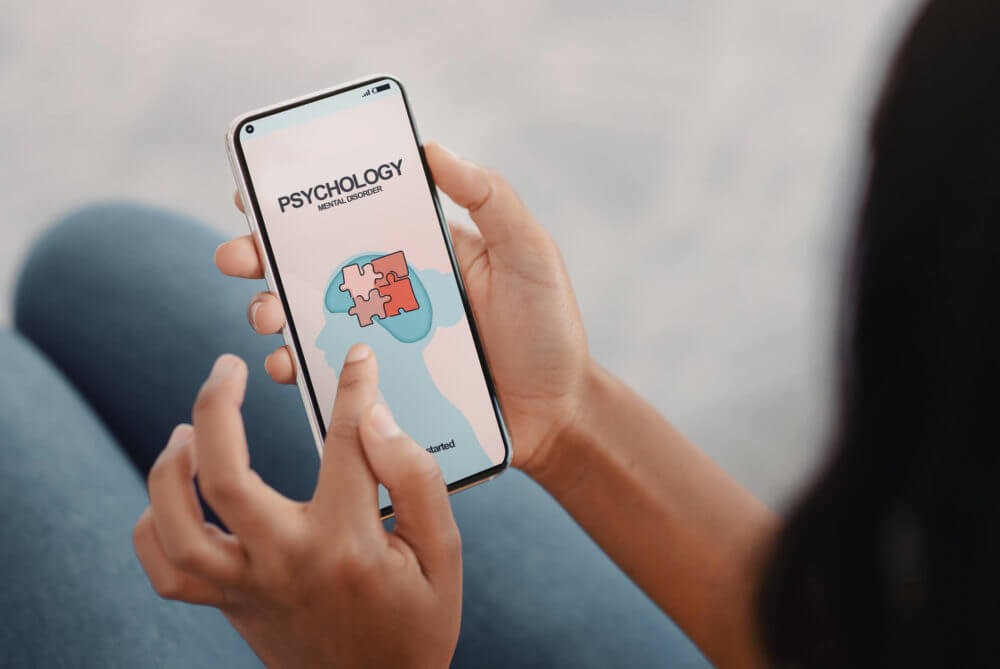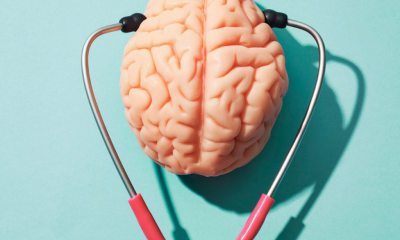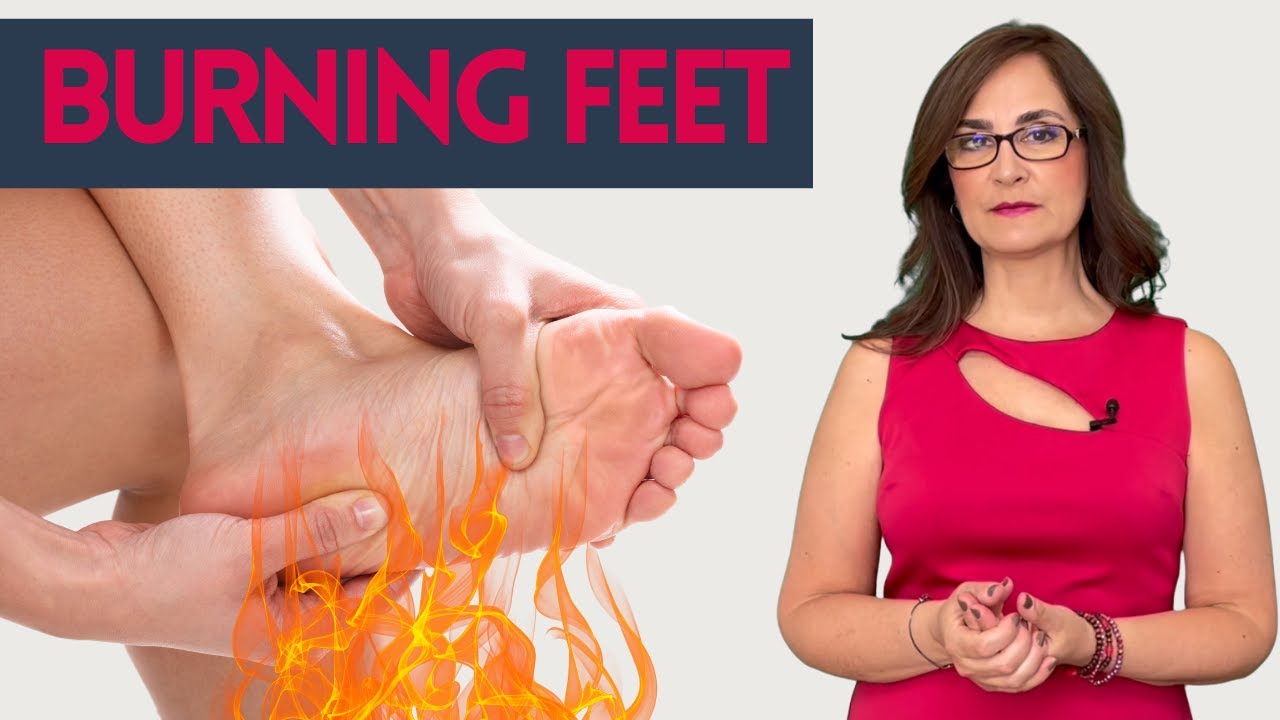health
How the Rise of Mental Health Apps Is Changing Therapy

In recent years, the landscape of mental health care has undergone a significant transformation, thanks to the advent of technology. Among the most notable advancements are mental health apps, which have revolutionized the way individuals access and engage in therapy. These digital tools are not only making mental health services more accessible but also providing innovative ways to manage mental well-being. This article explores how the rise of mental health apps is changing the therapy landscape, the benefits they offer, and the challenges they face.
The Emergence of Mental Health Apps
Mental health apps are software applications designed to support mental health by providing various services, including therapy sessions, mood tracking, meditation exercises, and cognitive behavioral therapy (CBT) techniques. The proliferation of smartphones and increased internet accessibility have facilitated the widespread adoption of these apps, making mental health resources available at the fingertips of millions.
Accessibility and Convenience
One of the most significant advantages of mental health apps is their accessibility. Traditional therapy often involves scheduling appointments, commuting to a therapist’s office, and adhering to a fixed schedule. In contrast, mental health apps allow users to access support anytime and anywhere. This convenience is particularly beneficial for individuals with busy schedules, those living in remote areas, or people who may feel stigmatized seeking in-person therapy.
Variety of Services
Mental health apps offer a wide range of services catering to different needs. Some of the most popular types include:
- Therapy Platforms: Apps like BetterHelp and Talkspace connect users with licensed therapists for virtual therapy sessions. These platforms often provide options for text, audio, and video communication, allowing users to choose the mode that suits them best.
- Meditation and Mindfulness: Apps like Headspace and Calm offer guided meditation and mindfulness exercises designed to reduce stress and improve mental well-being. These apps often include features like sleep stories and breathing exercises.
- Mood Tracking and Journaling: Apps like Moodfit and Daylio allow users to track their mood, identify patterns, and journal their thoughts. This self-monitoring can help individuals gain insights into their mental health and share valuable information with their therapists.
- Cognitive Behavioral Therapy (CBT): Apps like Woebot and MoodTools provide CBT techniques to help users challenge negative thought patterns and develop healthier coping mechanisms. These apps often include interactive exercises and educational content.
Cost-Effectiveness
Mental health care can be expensive, and not everyone has the financial means to afford traditional therapy. Mental health apps often offer more affordable options, with some providing free basic services and premium features at a lower cost than in-person therapy sessions. This cost-effectiveness makes mental health support more accessible to a broader audience.
Anonymity and Reduced Stigma
Despite growing awareness, stigma around mental health issues persists. Many individuals may feel uncomfortable seeking help due to fear of judgment. Mental health apps provide a level of anonymity that can encourage people to seek support without the fear of being recognized. Users can access resources and communicate with therapists discreetly, which can be particularly appealing for those dealing with sensitive issues.

Picture by: Yandex.com
Personalization and Data-Driven Insights
Mental health apps leverage technology to offer personalized experiences. By collecting data on users’ behaviors, moods, and interactions, these apps can provide tailored recommendations and interventions. For example, an app might suggest specific mindfulness exercises based on a user’s stress levels or offer motivational messages during challenging times.
Additionally, the data collected can be used to track progress and identify trends over time. This information can be invaluable for both users and therapists, enabling more effective treatment plans and better outcomes.
Challenges and Concerns
While mental health apps offer numerous benefits, they also face several challenges and concerns:
- Quality and Regulation: The rapid growth of mental health apps has led to a crowded market with varying levels of quality. Not all apps are created equal, and some may lack evidence-based practices or proper oversight. Regulatory bodies are still catching up, and there is a need for standardized guidelines to ensure the safety and efficacy of these apps.
- Privacy and Security: Mental health apps collect sensitive data, raising concerns about privacy and security. Users must be assured that their information is protected and not misused. Developers must prioritize robust security measures and transparent privacy policies.
- Effectiveness: While many mental health apps show promise, more research is needed to validate their effectiveness. Clinical trials and peer-reviewed studies are essential to determine which apps provide genuine therapeutic benefits and which do not.
- Human Connection: Despite the convenience of digital tools, some individuals may miss the human connection that traditional therapy offers. The therapeutic relationship between a client and therapist is a crucial component of effective treatment, and replicating this bond through an app can be challenging.
The Future of Mental Health Apps
The rise of mental health apps is undoubtedly changing the therapy landscape, and their impact is likely to grow in the coming years. As technology continues to advance, we can expect several trends to shape the future of these digital tools:
- Integration with Wearable Devices: The integration of mental health apps with wearable devices like smartwatches can provide real-time data on physical and mental well-being. This information can enhance the personalization of interventions and offer more comprehensive support.
- Artificial Intelligence and Machine Learning: AI and machine learning can improve the accuracy of mood tracking, provide more nuanced insights, and offer predictive analytics. These technologies can help identify early signs of mental health issues and suggest timely interventions.
- Virtual Reality (VR): VR has the potential to create immersive therapeutic experiences, such as exposure therapy for phobias or virtual environments for relaxation. This technology can enhance the effectiveness of mental health apps and provide new avenues for treatment.
- Collaboration with Healthcare Providers: As mental health apps become more sophisticated, collaboration with healthcare providers will be crucial. Integrating these apps into existing healthcare systems can ensure continuity of care and provide a more holistic approach to mental health treatment.
Conclusion
The rise of mental health apps is transforming the way individuals access and engage in therapy. By offering accessibility, convenience, and a variety of services, these digital tools are making mental health support more attainable for a diverse population. However, challenges related to quality, privacy, and effectiveness must be addressed to maximize their potential. As technology continues to evolve, mental health apps are poised to play an increasingly important role in the future of mental health care, providing innovative solutions to enhance well-being and improve lives.
health
Step Towards Relief: Dr. Irl Hirsch on Causes of Burning Feet
Food Drink
Balancing Starchy Vegetables: Expert Tips for Diabetes Diet

Introduction
Starchy vegetables like potatoes, corn, and peas can fit into a healthy diabetes diet when balanced correctly. Many people with diabetes fear these foods because they raise blood sugar. Yet these vegetables offer fiber, vitamins, and minerals essential for good health. With smart planning—using portion control, choosing cooking methods wisely, and pairing veggies with protein and healthy fats—you can enjoy starchy vegetables without big blood sugar swings. In this article, we share expert tips on how to balance starchy vegetables, manage glycemic control, and boost overall nutrition in a simple, practical way.
Understanding Starchy Vegetables and Glycemic Impact
Starchy vegetables have more carbohydrates than non-starchy ones like broccoli or spinach. Carbohydrates break down into sugar, which enters the bloodstream. The glycemic index (GI) measures how fast a food raises blood sugar. High-GI foods spike levels quickly, while low-GI foods cause a slower rise. Most starchy vegetables fall into the medium-GI category. For example:
- White Potato (baked): GI around 85 (High)
- Sweet Potato (boiled): GI around 63 (Medium)
- Corn (boiled): GI around 52 (Low)
- Green Peas (boiled): GI around 51 (Low)
By choosing lower-GI options and controlling portions, you can keep blood sugar stable while enjoying these nutritious foods.
Balancing Starchy Vegetables: Expert Tips for Diabetes Diet

Image by: Yandex.com
Tip 1: Master Portion Control
Portion size matters more than the vegetable type. A large serving of any starchy vegetable can overload your system with carbs. Aim for about ½ cup cooked (roughly 15 grams of carbs) per meal from starchy sources. To estimate:
- A tennis ball–sized scoop of mashed potato
- Half a cup of corn kernels
- Three to four small carrot rounds
Action Steps:
- Use measuring cups or a kitchen scale to learn your serving sizes.
- Fill ¼ of your plate with a starchy vegetable, ¼ with lean protein, and ½ with non-starchy veggies.
- Track your portions in a food journal or app for two weeks to build awareness.
Tip 2: Pair with Protein and Healthy Fats
Protein and fats slow digestion, reducing the GI effect of starchy vegetables. This pairing helps avoid blood sugar spikes. Try these combinations:
- Potato + Grilled Chicken + Olive Oil Drizzle: The chicken adds protein, and the oil adds healthy fats.
- Corn + Black Beans + Avocado: A Mexican-style bowl with fiber, protein, and monounsaturated fat.
- Peas + Cottage Cheese + Herbs: A light, high-protein side dish.
- Sweet Potato + Salmon + Greek Yogurt Sauce: Omega-3 fats from salmon and creamy protein from yogurt.
Action Steps:
- Always include a palm-sized portion of protein and a thumb-sized portion of healthy fat with starchy veggies.
- Experiment with different herbs and spices instead of sugar-laden sauces.
Tip 3: Choose Low-GI Preparation Methods
How you cook starchy vegetables changes their GI. Generally, boiling and steaming yield lower GI than baking or frying. Letting cooked starchy vegetables cool can also reduce their GI by forming “resistant starch”—a type your body digests more slowly.
Better Cooking Choices:
- Boil & Chill: Cook potatoes or sweet potatoes, cool them in the fridge, and use in salads.
- Steamed Corn: Steaming retains moisture and keeps the GI lower than roasting.
- Lightly Mashed vs. Smooth Mash: Chunky mash slows digestion compared to silky smooth.
- Roast with Olive Oil Sparingly: If you prefer roasted vegetables, use just a teaspoon of oil and roast at lower temperatures.
Action Steps:
- Plan ahead to cook a batch of starchy vegetables and cool for later use.
- Mix cooked and cooled veggies into soups, salads, or side dishes.
Tip 4: Rotate Your Veggies for Variety
Eating the same starchy vegetable every day can lead to nutrient gaps. Rotate between potatoes, sweet potatoes, corn, peas, squash, and plantains to get a range of vitamins and minerals. For example:
- Monday: Boiled green peas with mint
- Tuesday: Mashed sweet potatoes with cinnamon
- Wednesday: Corn and black bean salad
- Thursday: Squash noodle stir-fry
- Friday: Plantain chips baked lightly
Action Steps:
- Create a weekly menu that features at least three different starchy vegetables.
- Use seasonal produce for peak flavor and cost savings.
Tip 5: Incorporate Fiber and Whole Grains
Fiber further slows carb absorption. Pair starchy vegetables with whole grains like brown rice or quinoa to boost fiber content. For instance:
- Sweet Potato Bowl with Quinoa Pilaf
- Potato and Farro Soup
- Corn and Barley Salad with Herbs
Action Steps:
- Replace half your potato serving with a ¼ cup of cooked whole grain.
- Add chia seeds or ground flax to mashed vegetables for extra fiber.
Tip 6: Monitor Blood Sugar and Adjust
Individual responses vary. Test your blood sugar before and two hours after meals to see how your body handles different starchy vegetables and preparations. Keep notes:
- Which vegetable caused the biggest rise?
- Which cooking method worked best?
Over time, you will learn your personal tolerance. This data helps you fine-tune portions and pairings for optimal blood sugar management.
Action Steps:
- Invest in a reliable glucometer and log your readings.
- Share your logs with your healthcare provider or dietitian for guidance.
Building Balanced Meals Around Starchy Vegetables
A balanced plate ensures blood sugar stays steady:
- Non-Starchy Veggies: Fill half your plate with greens like spinach or broccoli.
- Lean Protein: Add a palm-sized serving of fish, poultry, tofu, or lean beef.
- Starchy Vegetable: Keep it to a quarter plate, about ½ cup cooked.
- Healthy Fats: Drizzle olive oil, add avocado, or sprinkle nuts.
Sample Day Menu
- Breakfast: Veggie omelet with a small baked sweet potato.
- Lunch: Quinoa salad with corn kernels, black beans, and lime dressing.
- Snack: Carrot sticks with hummus.
- Dinner: Grilled salmon, boiled green peas, and a side salad with olive oil.
Expert Insights and Common Myths
Myth: “All starchy vegetables raise blood sugar too much.”
Fact: Portion size and pairing determine impact more than the vegetable itself.
Expert Advice:
- “Choose unprocessed starchy vegetables over refined grains for better nutrient density,” says Registered Dietitian Jane Clark.
- “Cooling cooked starchy veg builds beneficial resistant starch, improving gut health and glycemic control,” notes Dr. Mark Reyes, Endocrinologist.
Tips for Shopping and Storage
- Shop Seasonally: Fresh, in-season produce is tastier and cheaper.
- Buy Frozen: Frozen peas, corn, and squash keep nutrients locked in and last longer.
- Store Properly: Keep potatoes and sweet potatoes in a cool, dark place.
- Prep Ahead: Pre-cook and portion starchy vegetables for quick meals.
Conclusion
Balancing starchy vegetables in a diabetes diet is all about smart choices and personal tuning. Master portion control, pair carbs with protein and healthy fats, and favor low-GI cooking methods. Rotate your veggies, boost fiber with whole grains, and monitor your blood sugar to know what works for you. By building balanced plates and planning meals, you can enjoy the taste and nutrition of starchy vegetables without fear. Remember, a varied, well-rounded diet supports both glycemic control and overall health. With these expert tips, you’ll find confidence in crafting meals that nourish your body and keep blood sugar steady.
health
Top Derm’s 4 Home Remedies for Post-Pregnancy Skin Resilience

Introduction
Welcoming the miracle of life into the world is a joyous occasion, but for many mothers, it can be accompanied by the physical marks of motherhood—stretch marks. In this comprehensive guide, Rosemary Gladstar, an esteemed herbalist, collaborates with a top dermatologist to unveil a holistic approach to post-pregnancy skin resilience. Together, they offer insights into the power of nature and dermatological expertise to address stretch marks, providing effective home remedies for rejuvenating the skin after the profound journey of pregnancy.
Rosemary Gladstar’s Herbal Wisdom
1. Rosemary Gladstar’s Holistic Vision
At the heart of herbalism lies Rosemary Gladstar’s holistic vision. With a rich background in herbal wisdom, she views nature as a source of profound healing. Her philosophy centers on harnessing the power of herbs to nurture and restore the skin. This foundational perspective sets the tone for the collaborative effort in addressing post-pregnancy skin concerns.
2. Nature’s Bounty for Skin Resilience
Gladstar’s trust in nature’s bounty is evident in her approach to skincare. She believes in the efficacy of herbs and natural ingredients in promoting skin health. By exploring the healing potential of plants, she provides a gateway to a world where skincare transcends conventional methods, embracing the simplicity and efficacy of nature’s gifts.
The Top Dermatologist’s Insights
1. Dermatologist’s Expertise in Post-Pregnancy Skincare
Collaborating with Rosemary Gladstar is a top dermatologist, bringing medical expertise to the discussion. Their collaboration ensures a balanced and holistic approach to post-pregnancy skincare. The dermatologist’s credentials and experience set the stage for a comprehensive understanding of the challenges faced by post-pregnancy skin, especially concerning stretch marks.
2. Understanding Stretch Marks
Before delving into the remedies, it’s crucial to understand the physiology of stretch marks. The dermatologist provides insights into why and how stretch marks occur, offering a foundation for the home remedies that follow. This section aims to demystify the nature of stretch marks, making the solutions more relatable and effective.
The 4 Home Remedies

Image by: Yandex.com
1. Remedy: Herbal Infused Oils for Elasticity
The first home remedy focuses on enhancing skin elasticity using herbal-infused oils. Rosemary Gladstar’s herbal expertise comes to the forefront as specific herbs are introduced for their skin-nourishing properties. This remedy lays the foundation for improving the skin’s ability to stretch and recover, addressing one of the primary concerns of post-pregnancy skin.
2. Remedy: Nutrient-Rich Diet for Skin Renewal
The second remedy emphasizes the role of nutrition in supporting skin renewal. The dermatologist provides insights into the importance of a nutrient-rich diet for post-pregnancy skin health. This holistic approach addresses stretch marks from within, acknowledging the symbiotic relationship between diet and skin resilience.
3. Remedy: Gentle Massage Techniques
Maintaining a gentle touch becomes the third remedy, focusing on the benefits of massage techniques for improved blood circulation. Rosemary Gladstar shares her recommended massage techniques designed specifically for addressing stretch marks. This remedy combines herbal wisdom with practical application, offering a soothing and effective approach to skincare.
4. Remedy: DIY Herbal Skin Masks
The fourth remedy introduces the concept of DIY herbal skin masks. These masks, crafted from natural ingredients recommended by both Rosemary Gladstar and the dermatologist, become a rejuvenating treatment for post-pregnancy skin. The article provides easy-to-follow recipes and application tips, empowering mothers to take charge of their skincare routine.
Visual Table: Home Remedies for Post-Pregnancy Skin Resilience
| Home Remedies | Description |
|---|---|
| Herbal Infused Oils for Elasticity | Enhancing skin elasticity with Rosemary Gladstar’s herbs. |
| Nutrient-Rich Diet for Skin Renewal | Supporting skin renewal through a diet recommended by a dermatologist. |
| Gentle Massage Techniques | Improving blood circulation with Rosemary Gladstar’s massage techniques. |
| DIY Herbal Skin Masks | Rejuvenating the skin with at-home herbal masks. |
Real-Life Resilience
Testimonials and Experiences
Real-life experiences add a personal touch to the article, featuring testimonials from mothers who have successfully used these home remedies. These stories provide insights into the efficacy of the collaborative approach between Rosemary Gladstar and the dermatologist. Mothers share their journeys of rediscovering confidence and resilience in their post-pregnancy skin.
Incorporating Skin Resilience into Daily Life
Rosemary Gladstar’s Daily Rituals for Post-Pregnancy Skin Care
The article concludes with Rosemary Gladstar’s practical tips on incorporating daily rituals for post-pregnancy skin resilience. Beyond the specific remedies, she suggests a holistic lifestyle that nurtures both internal and external well-being. From herbal teas to mindfulness practices, Rosemary Gladstar’s guidance becomes a roadmap for mothers seeking to embrace their bodies with pride and gratitude for the miraculous journey of motherhood.
Conclusion
In the pursuit of stretch mark solutions, Rosemary Gladstar and the top dermatologist present a holistic and collaborative approach that combines herbal wisdom with medical expertise. The 4 home remedies offer effective and natural solutions for post-pregnancy skin resilience. As mothers embark on this journey, may they find empowerment in the simplicity of nature and the efficacy of dermatological insights. Let stretch marks become a testament to the strength and beauty of motherhood, adorned with the wisdom of herbal remedies and the expertise of dermatological care. Rosemary Gladstar’s herbal wisdom, combined with dermatological expertise, paves the way for a holistic and effective approach to post-pregnancy skincare, allowing mothers to embrace their post-pregnancy bodies with resilience and grace.
-
Business2 years ago
Cybersecurity Consulting Company SequelNet Provides Critical IT Support Services to Medical Billing Firm, Medical Optimum
-
Business2 years ago
Team Communication Software Transforms Operations at Finance Innovate
-
Business2 years ago
Project Management Tool Transforms Long Island Business
-
Business2 years ago
How Alleviate Poverty Utilized IPPBX’s All-in-One Solution to Transform Lives in New York City
-
health2 years ago
Breast Cancer: The Imperative Role of Mammograms in Screening and Early Detection
-
Sports2 years ago
Unstoppable Collaboration: D.C.’s Citi Open and Silicon Valley Classic Unite to Propel Women’s Tennis to New Heights
-
Art /Entertainment2 years ago
Embracing Renewal: Sizdabedar Celebrations Unite Iranians in New York’s Eisenhower Park
-
Finance2 years ago
The Benefits of Starting a Side Hustle for Financial Freedom







































